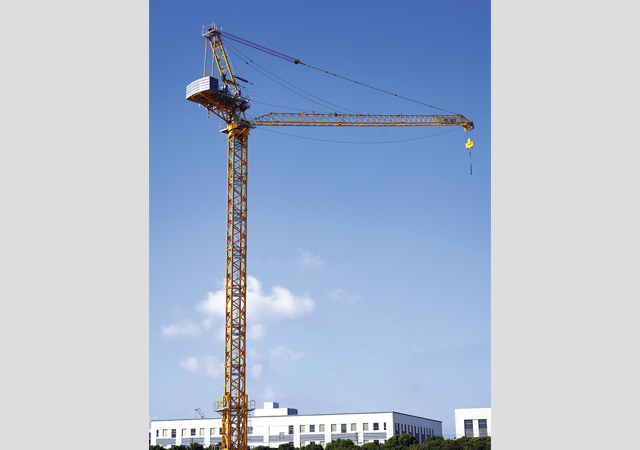
 Potain MCR-305 delivers better space optimisation.
Potain MCR-305 delivers better space optimisation.
Manitowoc has launched its new Potain MCR 305 luffing jib tower crane, which was jointly developed by French and Chinese engineers. Customer feedback harnessed through the company’s extensive Voice of the Customer process helped optimise the new design, offering several improvements over earlier models, says the USA-headquartered crane manufacturer.
The latest luffing jib crane from Potain can reach a height of 190 m with almost half the anchorage points required by similar models. It also has a smaller out-of-service radius, optimising space on jobsites for better productivity and profitability.
One of the most impressive advances of the MCR 305 is its optimised design, which significantly reduces the number of points where the crane must be secured to a building as construction grows upwards, according to a spokesman for Manitowoc.
“Requiring fewer anchorage points means more efficient assembly and less expense for contractors, saving precious time on the tight schedules high-rise projects demand,” says Leong Kwong-Joon, Regional Product Manager for Potain tower cranes at Manitowoc. “For example, with the existing MCR 295 A configured with a 60-m jib, 11 anchor points are required to reach a height of 192.6 m. However, with the new MCR 305 with the same jib, just six anchor points are needed to reach 194.3 m.”
Equally important for contractors is the MCR 305’s reduced out-of-service radius. For example, with a 60-m jib, the out-of-service radius of the MCR 305 is just 12.5 m, compared with 22 m for the MCR 295 A in the same configuration, he points out. Lowering the out-of-service radius allows contractors to place more cranes on constrained jobsites, making more lifting options available and delivering better space optimisation. It could mean projects considering a high-rise build with just one crane may now be able to accommodate two, delivering huge productivity advantages.
 |
|
MCR 305 ... fewer anchorage points means more efficient assembly and less expense for contractors. |
Heavy lifting
The new crane’s increased load charts make it more attractive for high-rise construction, as it can handle heavier loads, says Kwong-Joon.
“We’ve had extensive conversations with customers and the insights we gained have helped us develop an impressive new luffing jib crane. Strength gains are realised along the entire length of the jib. There are also great savings for customers in climbing higher faster, and better productivity with a substantially reduced out-of-service radius. We’re excited to launch this new model to market.”
Basic design, wind performance, and wind tunnel tests for the crane were carried out in France, while the Chinese team completed the structural design and test verifications. Each jib position and lifting point on the crane was subject to an extensive design and analysis process lasting several months.
There are two versions of the MCR 305: the 20-tonne capacity MCR 305 H20, and the 25-tonne capacity MCR 305 H25. With a 60-m jib length, maximum tip loads are 3.1 tonnes for the H20 version and 3 tonnes for the H25 version. There are multiple winch options, depending on customer preference, including HPL (High-Performance Lifting) options, with up to 1,200 m of wire rope available.
The cranes are built at the Manitowoc factory in Zhangjiagang, China, and will be sold across Asia, Australia and New Zealand, Africa, the Middle East and Latin America.
Manitowoc, through its wholly-owned subsidiaries, designs, manufactures, markets, and supports comprehensive product lines of mobile hydraulic cranes, lattice-boom crawler cranes, boom trucks, and tower cranes under the Aspen Equipment, Grove, Manitowoc, MGX Equipment Services, National Crane, Potain, and Shuttlelift brand names.





















_0001.jpg)


.jpg)
















.jpg)








.jpg)



_0001.jpg)

